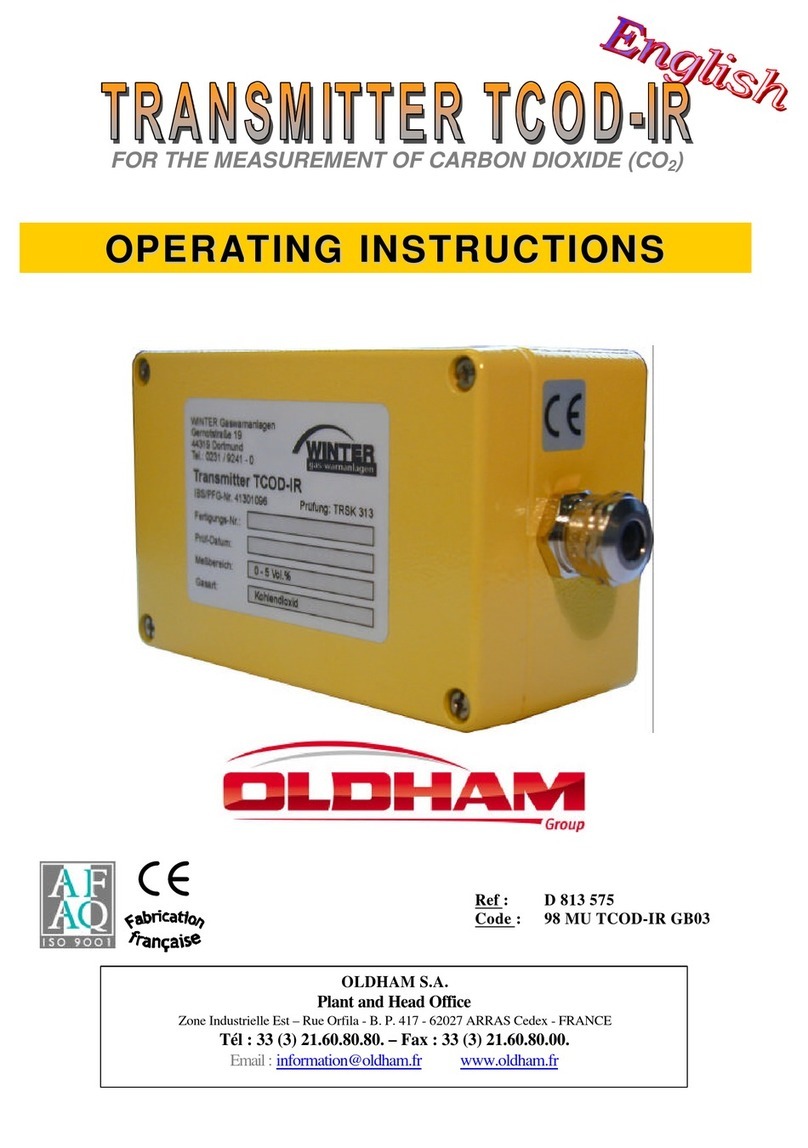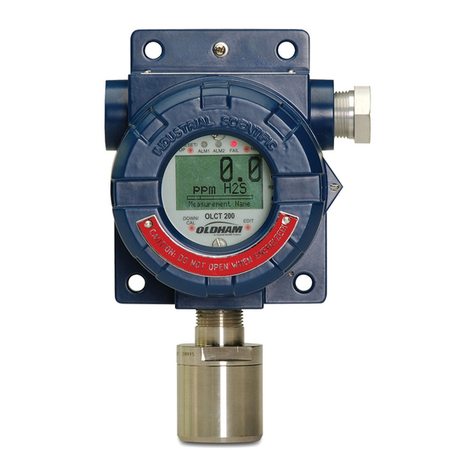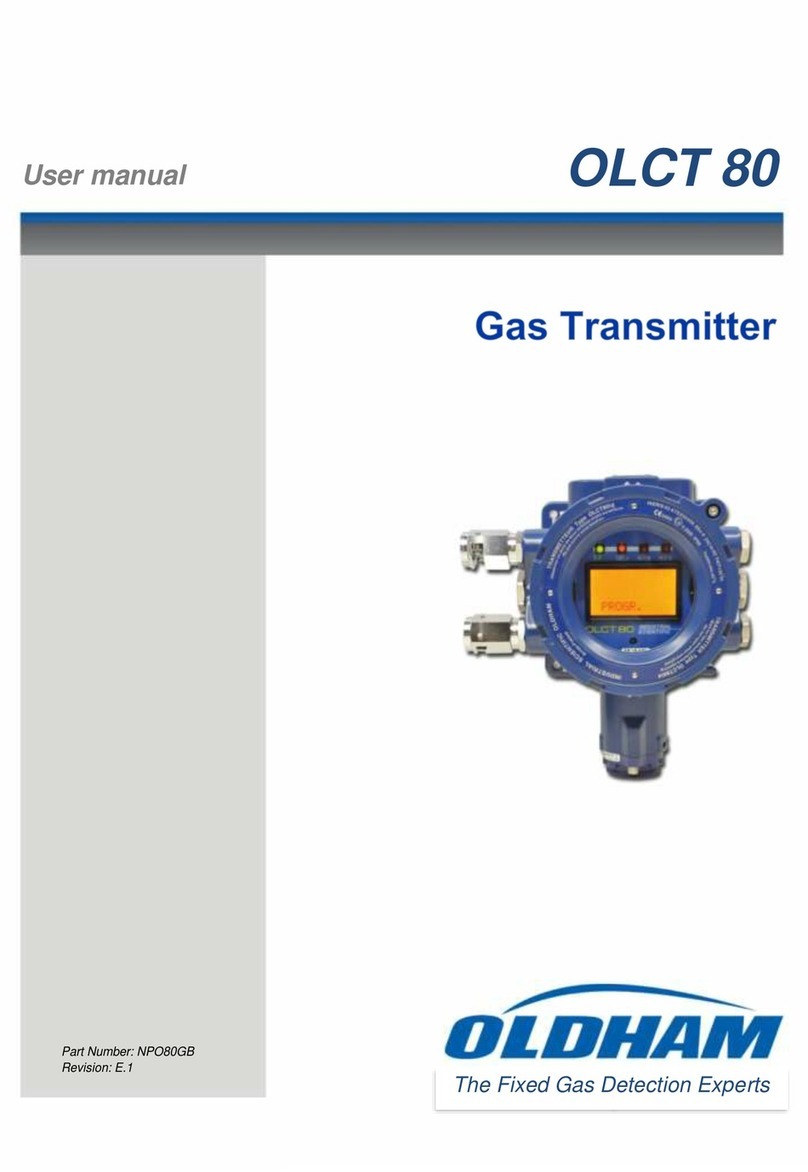
4OLCT10N
Manual
Thank you for choosing this OLDHAM instrument.
All of the necessary actions have been taken in order to ensure your complete
satisfaction with this equipment.
It is important that you read this entire manual carefully and thoroughly.
The extent of our responsibility
INDUSTRIAL SCIENTIFIC OLDHAM shall not be held responsible for any
damage to the equipment or for any physical injury or death resulting in whole
or in part from the inappropriate use, installation, or storage of the equipment,
which is the result of not complying with the instructions and warnings, and/or
with the standards and regulations in force.
INDUSTRIAL SCIENTIFIC OLDHAM does not support or authorize any
business, person, or legal entity in assuming responsibility on behalf of
INDUSTRIAL SCIENTIFIC OLDHAM, even though they may be involved in the
sale of INDUSTRIAL SCIENTIFIC OLDHAM products.
INDUSTRIAL SCIENTIFIC OLDHAM shall not be responsible for any damage,
direct or indirect, or for damages and interest, direct or indirect, resulting from
the sale and use of any of its products UNLESS SUCH PRODUCTS HAVE
BEEN DEFINED AND CHOSEN BY INDUSTRIAL SCIENTIFIC OLDHAM
FOR THE USE THAT THEY ARE INTENDED.
Ownership clauses
The drawings, specifications, and information herein contain confidential
information that is the property of INDUSTRIAL SCIENTIFIC OLDHAM.
This information shall not, either in whole or in part, by physical, electronic, or
any other means whatsoever, be reproduced, copied, divulged, translated, or
used as the basis for the manufacture or sale of INDUSTRIAL SCIENTIFIC
OLDHAM equipment, or for any other reason without the prior consent of
INDUSTRIAL SCIENTIFIC OLDHAM.






























